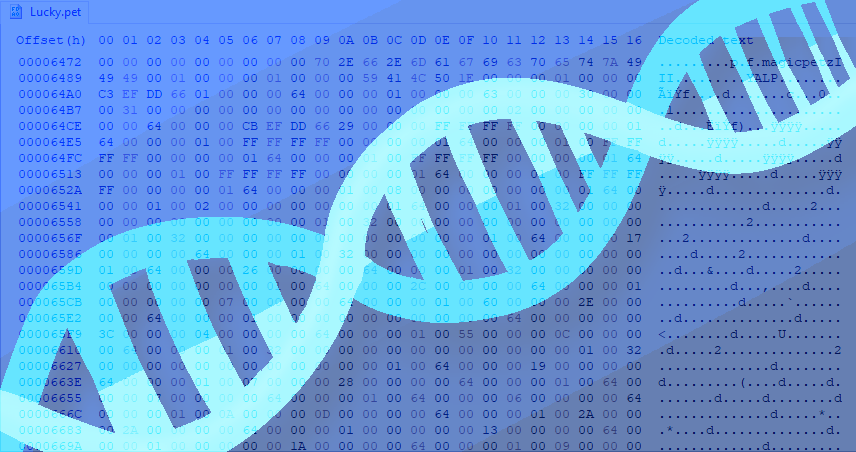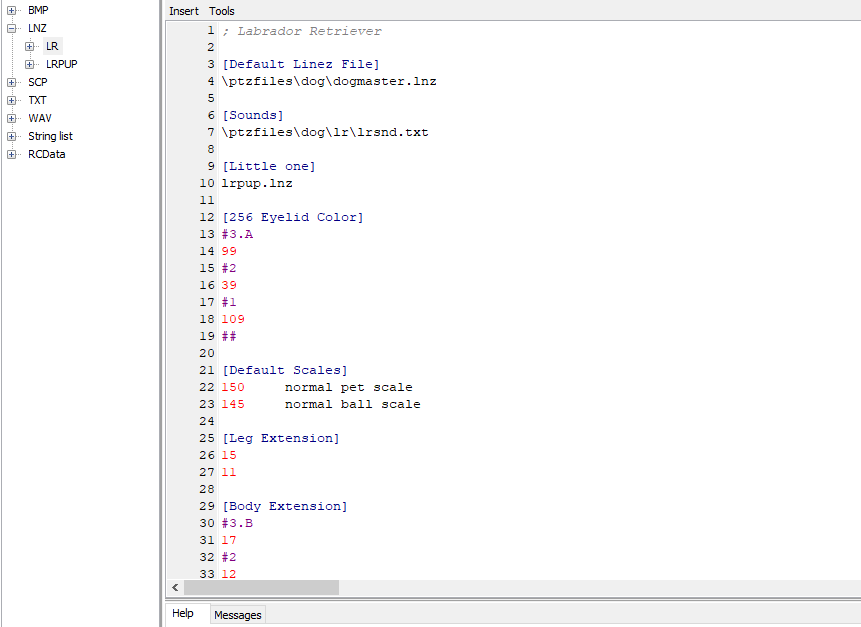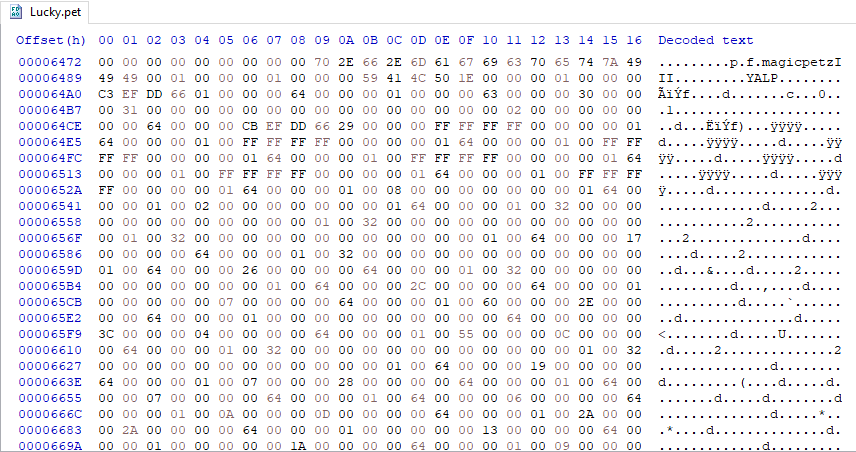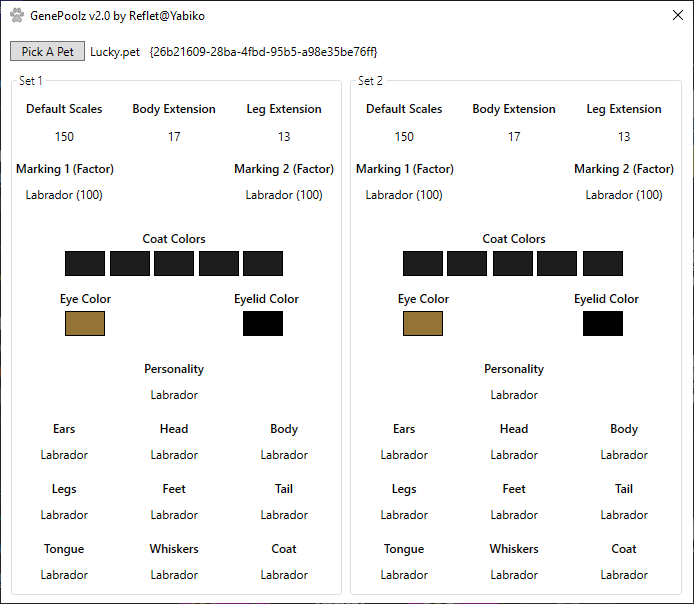
Indeed it does! This is how Petz determines funky things like eye colour, fur colour, personality, and even if they trot or do tricks!
To give you an idea of how detailed the genetics can get, one breed can have 309 septillion possibilities. Can you guess which it is?
Each breedfile contains at least one “description” of what a pet will look like. This is called the LNZ. The LNZ has a bunch of sections in it that show the various features of the breed.
Each bit in the LNZ is a little different for each breed, and “cat” breeds and “dog” breeds have completely different layout for some sections.
Here’s an image of a LNZ for the Labrador dog breed.

For a guide to what breedz carry what, I have a page up here.
Each pet has two sets of genetics. A pet from the Adoption Centre will have two copies of the same information; a pet that is bred will have one set from each parent. Just like real life!
Here’s a view of the genetics inside of a petfile, opened in a hex editor. Yikes!

Here’s the same file in GenePoolz. Much better.

(Information from Intron/Exon.)
My personal favourite aspect of Petz is the ability for petz to gain mutations.
Note that this information only applies to petz adopted from the AC. Hexed pets can have very different inheritance.
Petz can inherit from both parents (25% each), one parent of the mother (25%), and one parent of the father (25%).
Petz can have 10 fur colours:
Some breedz have more than one colour which can change.
One colour:
Two colours:
Three colours:
The mutation rate for fur colour is 5%.
Petz can be bred to have eye colours in 14 different ranges:
Eye colour mutations happen at a 20% rate, but it can be hard to tell! The reason why eye colour mutations appear to be less rare is because they often tend to mutate within ranges.
For example, if you get a pet that has brown-95 eyes, you can assume that most of your mutations will occur in the 90-99 range. The mutation rate for getting eyes outside the range is 2%.
The easiest way to get visible eye mutations is to breed petz with eye colours that don’t have a range. Green-2, aqua-6, and dark aqua-203 eyes can all be found “naturally” in the AC.
Note that eye colour isn’t always inheritable. I’ve bred many a pet with pink-75 or black-244 eyes, but they didn’t have pink or black eyes in their LNZ. This is often called a “fluke mutation”!
Petz can have eyelid colours mutate. The rate is 4%, and unlike the other two the colour chosen seems to be random (though of course within the limits of white, grey, black, cherry, ginger, brown, sandy, and dusty).
Some markings have unique rates of inheritance, such as the face streak in Maine Coon cats (66.7%). You can only have two kinds of markings at a time.
Petz can inherit aspects of their SCP (the section of the file that determines personality… not to be confused with the SCP Foundation) from either parent.
Trotting (in dogz) and trickster (in catz) genes can also be inherited, though trotting only inherits at 33%.
— — — — —